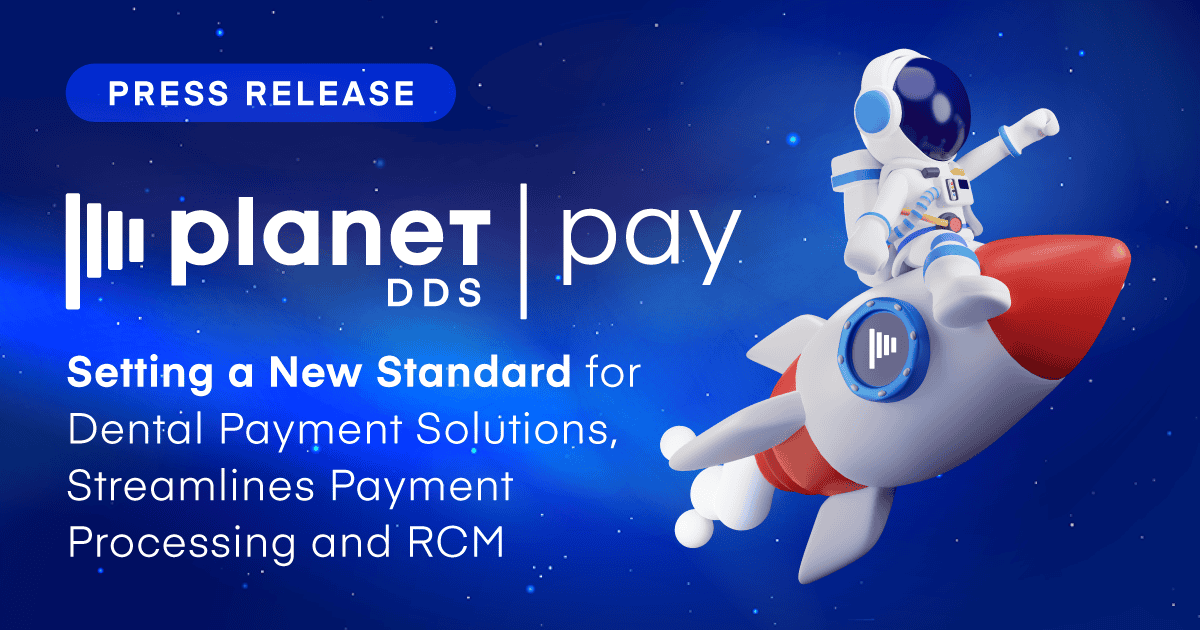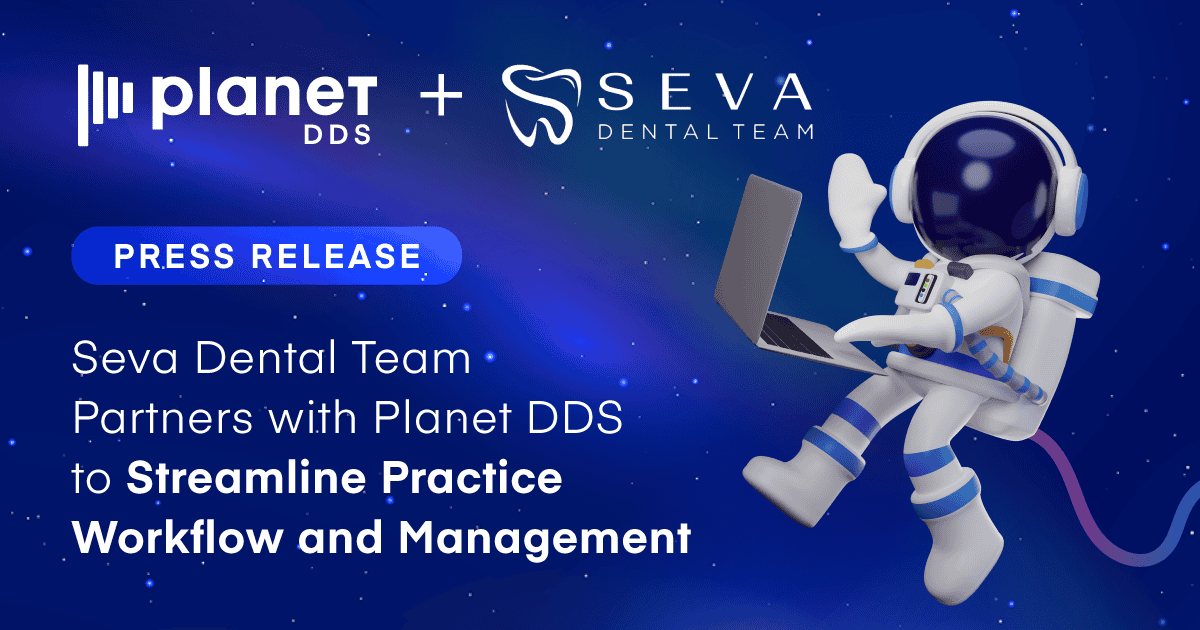Dental Digital Marketing: Why it Should Be a Top Priority

Are you trying to maximize your dental practice’s search engine optimization (SEO)?
Your dental practice’s ability to rank organically in search results is getting increasingly complex; thus, your dental digital marketing plan is more crucial than ever to acquire new patients.
After all, dental clinics must consistently acquire new patients to achieve growth and success.
The marketing environment, especially dentistry digital marketing and promotion methods, has changed dramatically. Traditional dental marketing tactics have their place, but no practice can expect to grow without a solid digital marketing and advertising strategy.
10 Dental Digital Marketing Strategies
You, like most dentists, are likely preoccupied with providing dental treatments and don’t have the time to experiment with new marketing methods. However, in this digital age, all dental practices must understand the value of dentist digital marketing. Instead of relying solely on traditional methodologies, try using these proven techniques for digital marketing for dentists:
1. Establish a Brand Identity
Your practice’s branding is what makes you stand out from the competition and generates a distinct experience that your patients notice the moment they connect with you. Regardless of how consumers engage with your office or brand – whether it’s through your website, blog, email, Facebook, Twitter, Tik Tok, or other emerging social media platform – they should all reflect the distinct experience that your brand offers.
Regarding dental digital marketing, a brand strategy is a long-term plan for establishing an effective brand presence to achieve particular outcomes. To begin, it’s essential to understand that your brand is not your service, logo, website, or name. Your brand is significantly more comprehensive, and it creates a more profound, emotional relationship with your patients by consistently delivering a product that meets the brand’s promises.
Any successful practice should have a well-thought-out and established brand identity to set yourself apart from the competition.
2. Create a Google Business Profile
An easy dental digital marketing strategy is to create a Google Business Profile (GBP) page.
In essence, your Google Business Profile is a trusted source of information about your dental practice – location, hours, images, and so on – that Google integrates into multiple search experiences.
As you might expect, a detailed and comprehensive Google Business Profile may help your clinic appear in a variety of Google search results, including patients actively looking for a dentist.
The process is straightforward:
- Using your Gmail account, create a Google Business Profile
- Make individual GBP pages if you have a multi-location practice.
- Complete the location verification procedure, which may take several days or weeks to complete.
- After you’ve been validated, fill up as much of your GBP page as you can – the more detailed data you have, the better.
You’ll need to perform some dental SEO on your GBP page after you’ve built it by filling out each area. This is critical since Google’s Local Map Pack immediately syncs all of the information from your GBP page. This ranking classifies comparable companies by location, and the dental offices located closest to the potential patient’s location will rank the highest.
There are numerous aspects of a GBP page. To begin, double-check that all of your essential company information is correct and comprehensive, including:
- Contact info and hours
- Business category and service description
- Service area
- Appointment link
- Photographs of your clinic and employees
3. Build a Social Media Presence
Although social media is already an essential aspect of modern dentistry office marketing, many analysts believe it will only continue to grow. Part of this is because younger generations are increasingly searching for dentists independently. Having an active and productive dental office on social media will be crucial to obtaining new patients.
So, it is no surprise that social media is a game-changer when it comes to dental digital marketing. However, you need to publish high-quality images with captivating descriptions to capitalize on them.
Low pixel count, fuzzy, or even bad Photoshop jobs, do not attract attention. They serve to detract from the quality of your work. You have to realize that utilizing high-quality images and spending time editing them reveals a lot about your personality at work.
Investing in a dental photography class and a quality camera will be advantageous.
Although the algorithm is constantly changing, it is occasionally enough for a single fantastic shot or video to go viral. This will open doors to new patients ready to commit to your services.
4. Incorporate Video Marketing
Creating unique dental digital marketing video content may be expensive and time-consuming. Nonetheless, many digital marketing professionals believe that video content marketing will continue growing in the future years. Part of this is since one-third of internet users spend one-third of their time online watching videos.
When it comes to assisting potential clients in learning more about your dental services, video is a great tool.
Your video’s return on investment (ROI) will be determined by several factors, including how effectively you’ve organized your content strategy and the quality of your videos.
You might assume that making a film is costly and time-consuming. However, there is a lot of technology that allows you to generate good video quickly at a shoestring price.
After all, most of us have a decent video recorder in the form of smartphones in our pockets. Still, software solutions also simplify creating captivating explainer clips for a minimal cost. It’s faster to have a good ROI if you spend less on video production.
Not only will video marketing to dentists’ patients increase but so will the kind of videos available. New and current patients will expect to see “meet the staff” flicks, instructional movies on specific ailments, and so on, rather than generic advertising videos. The videos, like content marketing, will have to do more than sell your company; they’ll have to show off your skills and the people behind it.
Uploading videos to YouTube that target popular search phrases can help your company rank on Google’s first page. It’s because YouTube videos appear at the top of the screen for many search queries.
Here’s an example: When you look for “how to put in a retainer,” you’ll get many results. Google displays a video above the standard search results, below the highlighted snippet, and the “People also ask” area.
5. Improve Your Website’s Performance
Even if you have a gorgeous brick-and-mortar dental clinic in town, it won’t matter if you don’t have an A+ website. Patients will rate your clinic based on how your website appears and functions because it is frequently their first point of contact with you.
Website optimization is the act of enhancing the performance of your website in various areas, including online traffic, conversion rates, and usability. The primary purpose of website optimization is to ensure that it generates a seamless digital trip. However, keeping your content current and your website running smoothly will require consistency and effort. Your website needs to be actively managed and updated. This can appear as a massive undertaking, especially if your practice has a large, sophisticated website or many websites. This is why it’s best to break it down into distinct aspects of website optimization.
With effective dentist web marketing and website optimization, you can:
- Increase traffic – It’s simpler for visitors to locate your material organically through search engines if you optimize your website’s content and technical SEO.
- Increase conversions – Increased traffic means more opportunities for prospective leads to convert into paying clients. By improving the quality of your content, you’ll be able to provide a superior experience for both consumers and leads.
- Increase brand recognition and exposure – Increased traffic also provides you with additional opportunities to promote your business and engage with the right audience through relevant content.
- Enhance the brand’s image and experience – You strengthen your brand’s reputation by providing consistent, people-first experiences on your website. Because your website serves as an extension of your brand, a pleasant user experience may help you attract loyal consumers.
6. Invest in an SEO strategy
SEO is a significant element of digital marketing for dentist offices and interacting with patients looking for dental treatment. After all, people prefer to search and select their dentists online, particularly in their neighborhoods. And, as we mentioned earlier, many dentists are gaining new patients through local search experiences.
Fortunately, you’re already well on your way to implementing an effective dentistry SEO strategy through GBP and website optimization efforts. However, you’ll also want to double-check that you’ve ticked the following boxes:
- Use Google PageSpeed Insights to identify any issues slowing down your website.
- Streamline your site’s page structure (parent pages, subpages, blog posts, and so on) – to avoid a website that is cluttered with unorganized or irrelevant material.
- On each page, optimize the URL, page title, meta description, picture alt-tags, and page structure (H1, H2, etc.)
- Ensure that your site is encrypted with HTTPS.
- Create longer-form, content-rich pillar pages for each of your primary services, complete with videos, FAQs, and other pertinent information.
- Ensure you have internal links to similar information on your website and external links to reputable websites.
- Establish yourself as an authority in dentistry to enlighten and educate potential customers about your services. Create information that addresses specific dental patient pain points, concerns, and inquiries.
A solid keyword strategy may help you develop content ideas and keywords to employ across your site.
7. Testimonials and Reviews
Reviews have replaced word-of-mouth marketing. When you ask your patients how they discovered you, the majority of them will say, “I found you online,” “You had excellent Google ratings,” or “You were recommended to me by someone.” Most individuals check testimonials before visiting a new place. It’s easy to understand that people want their dentists to be the best, and excellent ratings translate to excellent service.
Maintaining a reliable, consistent service while focusing on patient experience will result in positive feedback. Excellent ratings will differentiate you from other dental practices.
An unfavorable review may have a significant influence on your work. Always give top-notch service and keep track of the feedback you receive.
Most physicians are hesitant to request a review, but if you know you gave exceptional service, make sure you ask for a Google review.
8. Create a Content Calendar for Your Dental Blog
Have you abandoned your blog? That’s unfortunate because it’s one of your best dental marketing tools. A typical flaw among dental clinics is out-of-date, unorganized, and irrelevant blog material. It’s also a squandered chance to create meaningful content and increase your online exposure! Your site’s blog material may help you offer value for your patients, rank on search engines, and develop your brand’s reputation in the field of dentistry.
Consider posting blog entries in the following categories:
- Common dental issues
- New dental techniques
- Oral health advice
9. Invest in Google Ads
Google Ads is a Google-based advertising network that promotes businesses to individuals searching online through a bidding mechanism. So, why should you utilize Google Ads? Google is the most popular online search engine, and without leveraging it, your dental digital marketing could be for naught.
The beautiful part of pay-per-click (PPC) advertising is that you only pay when someone clicks on your ad and visits your website or contacts you. You can build online adverts to market your practice to a specific target population using Google Ads. There are various Google Ads methods to employ, but to run a successful campaign, you must maintain track of your budget and your office’s KPIs. Conversion rates aren’t necessarily the most important KPIs. Because there is such a significant difference between the digital and physical worlds, it is imperative to include tangible KPIs, such as arriving patients at the office, in addition to online leads, to measure your actual return.
10. Facebook Ads
Sponsored social media ads differ from paid search in several ways, but both function by delivering advertisements to your chosen audience. Although sponsored search uses search queries, Facebook dental office advertisement uses specific audiences with particular online activity to target them. As a result, even if potential patients aren’t actively looking for a dentist, they might get acquainted with your brand.
Consider Facebook advertising like community newspaper advertisements, but with more detailed audience targeting. According to the United States Department of Labor, women make 80 percent of healthcare choices. Target specific audiences through Facebook advertisements to save money on ad spending and enhance conversions.
Dental Digital Marketing Mistakes to Avoid
As ranking organically becomes more complex, Google Ads will become a vital aspect of any digital marketing approach. As a result, you must be on top of your dentistry digital marketing game. Let’s look at some common blunders we encounter in dentistry digital marketing initiatives:
Using Your Website as a Landing Page
If a patient is looking for an implant dentist, it only makes sense to direct them to your website’s implant page, right? Wrong. Landing pages enhance conversion and decrease the cost per new patient acquisition. This is because landing pages are designed to focus on a single topic – whatever you’re advertising. So, if a potential patient searches for “dental veneers near me” and clicks on your ad, they’ll be sent to a website chock-full of information about dental veneers. It will address their worries and wants, as well as their questions and objections, using visuals, videos, and exciting writing, all without them having to speak to anybody in your office. Google will reward you for taking this approach by raising your quality score, lowering your cost per click, and cost to acquire a new patient.
Failure to Remarket
Not everyone who clicks on your digital ad will make an appointment with you. The sort of dentistry you’re promoting has a significant impact on conversion rates. Google advertising converts considerably slower for specialty services like cosmetic dentistry, dental implants, and sleep apnea, resulting in a lower total conversion rate. Before committing to a specialty service, patients conduct more research and ask more questions. This is when remarketing can come in handy.
Not Emphasizing Your Brand
Your brand is the determining factor between a phone call to your office and a Google search for a different choice. Your landing page should inform potential patients about who you are and how your practice differs from the dozens of other decisions on a Google search page.
Use language that demonstrates you’re not judgmental (no matter how long it’s been since they’ve seen a dentist), and answer the challenging questions upfront to get into those pain areas. This demonstrates to potential patients that you run a straightforward practice.
Streamline Your Practice
Now that you’ve sorted out your dental digital marketing, it’s time to organize your practice so you spend less on daily operations and have more time with your patients.
Thankfully, Cloud 9 is here to help. We offer an all-encompassing browser-based dental practice management system with specialized features to boost employee productivity, boost user efficiency, and reduce the number of stages in the workflow. Cloud 9 Software allows you to take your practice to new heights. Contact us today for a free demo.



